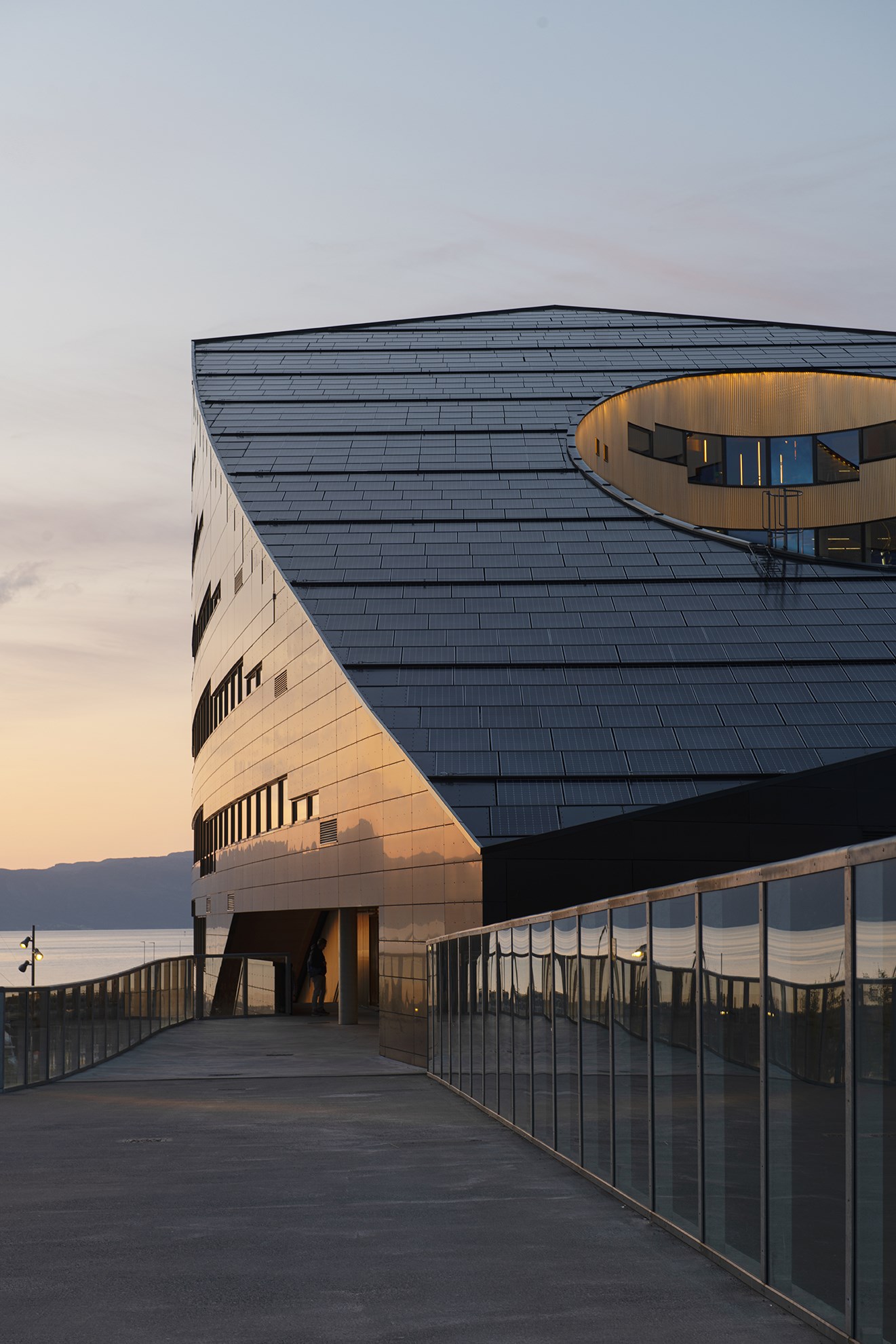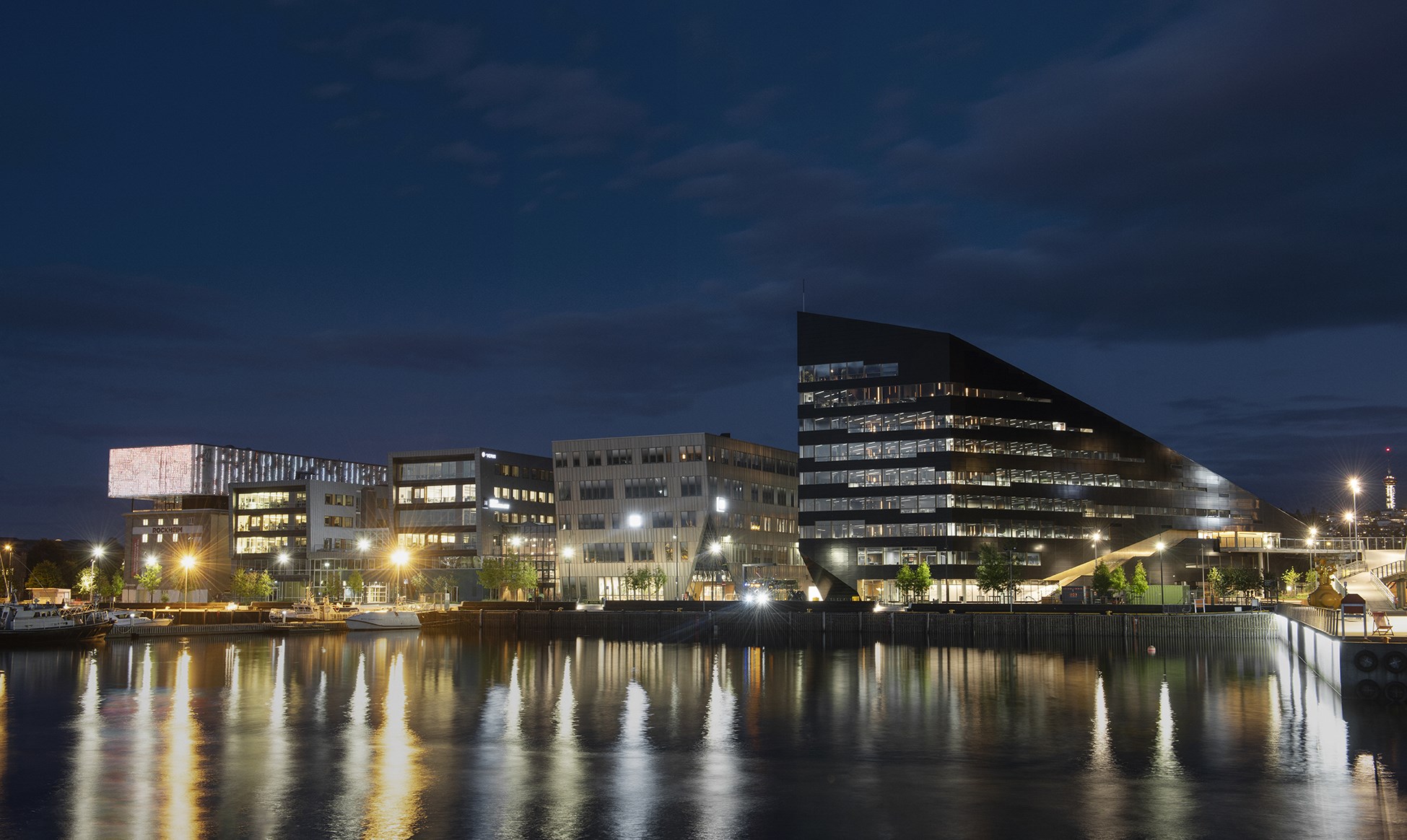See Full Size
Building buildings accounts for 37% of our global carbon emissions. Since we cannot turn all the buildings in the world into zero emissions to reset these values, the best thing we can do is to build our new buildings to be carbon positive.
Of course, the best proof to prove that this can be done anywhere in the world is in Norway, To do it in the city of Trondheim, which is at 63 degrees latitude. The energy-positive building will eliminate all carbon emissions, including the production of construction materials, construction, daily energy consumption and demolition, within 6 years from its construction, with the energy it produces. It will prevent the carbon emissions of other buildings in its remaining economic life after six years.
In fact, it has gone so far that the carbon emissions of the materials used in the building, which are extracted from nature, processed and transported, have been tracked and calculated. Since the energy produced is so high, a pantograph charging station for city buses was even installed at the stop next to the building. The eight-storey building has an area of 18,200 square meters. 13,500 square meters of it is above ground, the rest consists of mezzanine floors and parking lots.
Solar panels that produce electrical energy are placed at an angle of 19° to the sun. Electricity is generated by vertically mounted solar panels on the 3000 m2 roof and south building wall. The amount of energy produced; This corresponds to twice the amount used for heating, cooling, lighting and all other works of the building.
In order to ensure that it produces twice as much energy as it uses, the building was first made to consume very little energy. For lighting, human sensors, light sensors, automatically operating curtains and adjustable LED lamps are used. Two sources were used for heating, one of them is underground energy wells and the other is sea water. By selecting the one with the highest instantaneous temperature from these sources, heat pump Cooling and heating are provided. In energy wells, water cooled to freezing temperature is circulated through polymer flexible pipes. Heat is extracted from the soil and the building heating and hot water needs are met again with the heat pump.
The cooling required in summer is provided directly from sea water, which is 10-15 °C throughout the summer, and from energy wells, whose temperature decreases during the winter, without running a heat pump.
In ventilation, cooled air is thrown out by providing heat exchange between the air drawn from outside and the air thrown out. Similarly, the energy of wastewater, called gray water, will be extracted and given to the sewer. Powerhouse Brattørkaia The building was designed by an architectural design company called Snøhetta.
This news our mobile application Download using
You can read it whenever you want (even offline):




